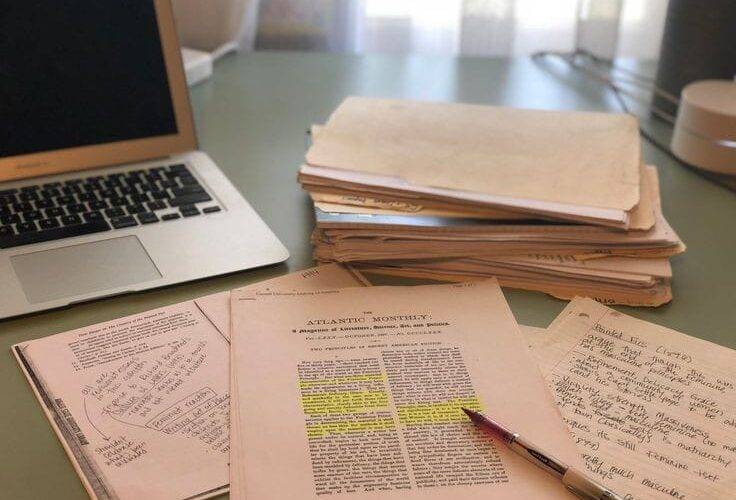Beta readers really are like the fairy helpers of the book world. They take your pumpkin of a manuscript and help you turn it into a carriage apt for the publishing ball. But, like any magical process, there’s a little bit of planning and finesse involved. You can’t just wave your wand (or, in this case, your first draft) and expect big miracles. Beta reading is a collective collaborative effort, and getting the most out of it requires a bit of strategy.
Start with a finished draft. And I mean finished. Beta readers aren’t mind readers, nor are they magicians who can conjure coherence out of unfinished mess. If your draft still has characters wandering aimlessly through half-finished plotlines or scenes where everyone out of nowhere changes names halfway through, it’s not ready. Beta reading is for a complete draft (or later)—the kind where you’ve already wrestled the plot into submission and pushed those quirky characters into doing what they’re supposed to. If you’re stuck at the brainstorming stage or have a half-formed draft, you’re looking for an alpha reader, not a beta.
Polish that draft. Sure, your beta readers aren’t expecting a Pulitzer Prize winner, but they also don’t want to slog through a mess of typos, grammatical errors, and sentences that read like your pet wrote as your co-writer. Proofread your manuscript as if your life depends on it. Continuity is equally important—if your lead’s eye color changes more often than the weather, or if they start the story as an only child and end with three siblings, you’re in trouble. Fix those inconsistencies before sending your draft out.
Format your manuscript properly. Nobody wants to squint at a 10-point, single-spaced document with paragraph breaks so rare they’re practically endangered. Stick to standard industry formatting: double-spaced, 12-point Times New Roman, and 1-inch margins. It’s the literary equivalent of showing up to a job interview in a suit instead of pajamas—it shows you’re taking this seriously.
So, what exactly is the beta reader’s job? In short: story, character, language, tone, and continuity. They’re not there to line-edit or catch every typo (though it’s a nice bonus if they do); their mission is to tell you whether your story works. Does the plot make sense? Are the characters believable? Does the tone stay consistent throughout, or does your heartfelt romance unusually get into slapstick comedy? Beta readers are your quality control team, making sure that your story holds up before it reaches the big world of publishing.
Speaking of publishing, a beta reader’s ultimate purpose is to make sure your manuscript doesn’t waste a publisher’s time. By the time a publisher sees your draft, it should be polished to near-perfection, free of typos, grammar errors, and glaring inconsistencies. The only question they should have is whether your book fits their house’s genre and target audience. If your manuscript is riddled with issues, no amount of brilliant storytelling will save it—it’ll be rejected faster than a vampire at a fairy festival.
Even if you’re self-publishing, the same rules apply. In this case, you’re the publisher, and the quality of your manuscript is entirely on your shoulders. Your beta readers are there to ensure that your book can stand shoulder-to-shoulder with traditionally published works, free of amateurish mistakes.
Now, where do you find these magical beings? Beta readers are everywhere—if you know where to look. Start with friends and family, but only if they can promise to set their biases aside. If your mom’s going to gush over your work no matter what, she’s probably not the best choice. Writing groups, Goodreads forums, and beta reading Facebook groups are fantastic resources. Local book clubs, especially genre-specific ones, can also be a goldmine. There are even dedicated beta reading websites, though their quality varies. The core key is finding people who are familiar with your genre and willing to provide real, constructive feedback.
Also are you worried about someone stealing your manuscript? Don’t be. The moment you put your words down, they’re protected by copyright. Sending your manuscript to beta readers creates a paper trail, further reducing the already minimal risk of theft. Sure, anything’s possible, but the odds of someone stealing your work are about as likely as you winning the lottery and getting into an accident on the same exact day.
How many beta readers should you have? It depends, but more is usually better. Four is a good starting point; ten is even better. Why so many? Because feedback is subjective. One reader might love your twist ending while another finds it predictable. The more opinions you have, the clearer the consensus becomes. Plus, let’s be honest—not everyone will finish your book. Life happens, and some readers will drop out. Having a larger pool ensures you still get enough feedback to work with.
Set clear expectations for your beta readers. Don’t just hand them your manuscript and say, “Tell me what you think.” Be specific. Create a questionnaire tailored to your needs: Did the story hold your interest? Were there any scenes that dragged? Did the characters feel authentic? Were there plot holes? Asking the right questions ensures you get real workable feedback rather than vague comments like, “It was good” or “I liked it.”
Deadlines are your friend. Without them, your manuscript might languish unread for months while your betas get distracted by Netflix binges or their growing pile of unread emails. A one-month deadline is a good balance—it’s enough time for dedicated readers to finish without dragging things out. When the deadline approaches, check in politely and ask for whatever feedback they’ve completed. This keeps things guilt-free for those who couldn’t finish while nudging procrastinators to step up.
When the feedback rolls in, brace yourself. No matter how constructive, criticism can sting—especially if it’s about parts of your story you’re most attached to. It’s okay to feel hurt, but don’t let it show. Thank your beta readers for their time and effort, even if their comments feel like a personal attack on your soul. If you’re not ready to process their feedback, set it aside for a few days (or weeks) until you can evaluate it with a clear head.
Look for patterns in the feedback. If three betas mention that Chapter 7 drags, they’re probably onto something. If one beta suggests adding a talking dog to your dystopian thriller, you can probably ignore that. Trust the consensus, but don’t feel obligated to act on every single comment—this is still your story, after all.
Lastly, remember that beta readers aren’t there to rewrite your book—they’re there to help you make it the best it can be. Their feedback is invaluable, whether you’re pursuing traditional publishing or going the indie route. Treat them well, and your manuscript (and future readers) will thank you.
So, find your beta squad, prepare your manuscript, and dive into the wonderful, messy, exhilarating process of revising your story. And when you’re knee-deep in edits, just remember: every great book was once a rough draft. You’ve got this!



